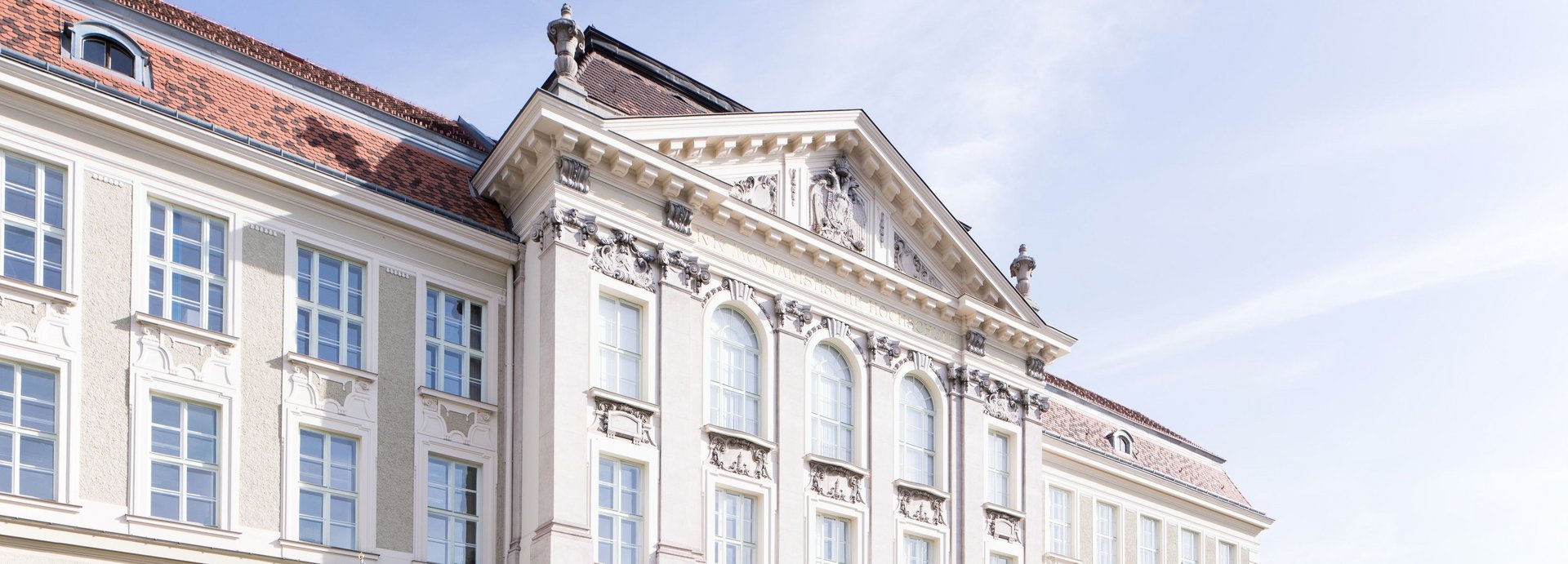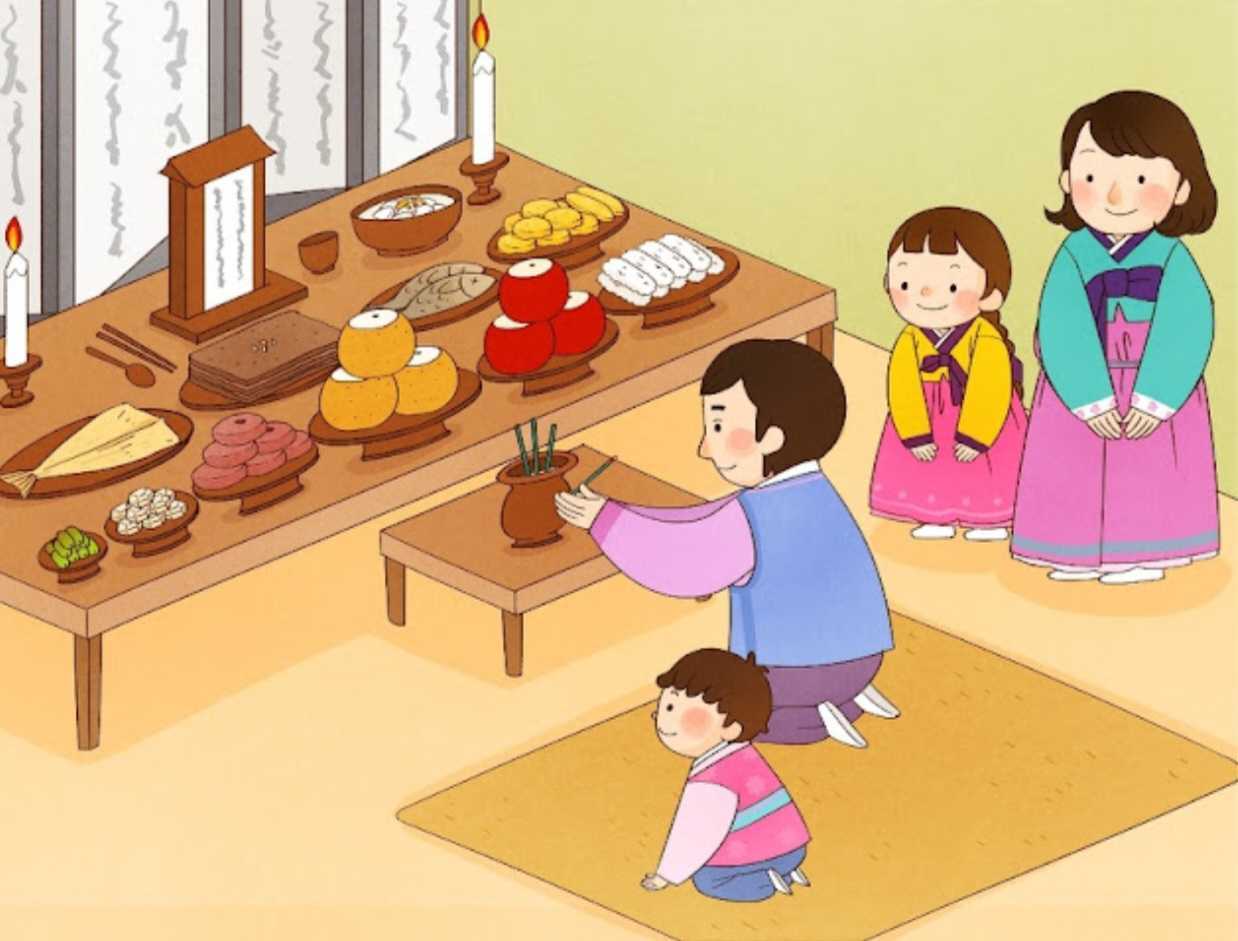Celebrating Korean New Year
Charye - Worshipping the Ancestors
In Korea, the ancestor worship comes first. This is called Charye. For this it is usual to wear the traditional Korean Hanbok (in a lot of palaces and traditional villages it is possible to rent those clothes). Charye is done to pay respect to the deceased family members. In Korean culture, it is believed that at Seollal the ancestors return to earth and participate in the festivities. Thus, at the beginning of the festival, ancestor worship is begun by placing the various prepared foods at the ancestral shrine for them and performing special rituals. The offerings are made only by the men and in a specific scheme. Candles and incense are lit to prepare the room for ancestor worship.
The most important ritual is the bowing to the shrine, which is called Sebae. In worshipping the ancestors, it is hoped to receive good luck and prosperity for the new year. However, this ritual of ancestor worship is not practiced by all Koreans. Christians among Koreans do not perform this ritual because it is not compatible with their religion. However, within the family only this part is omitted on New Year's Day.
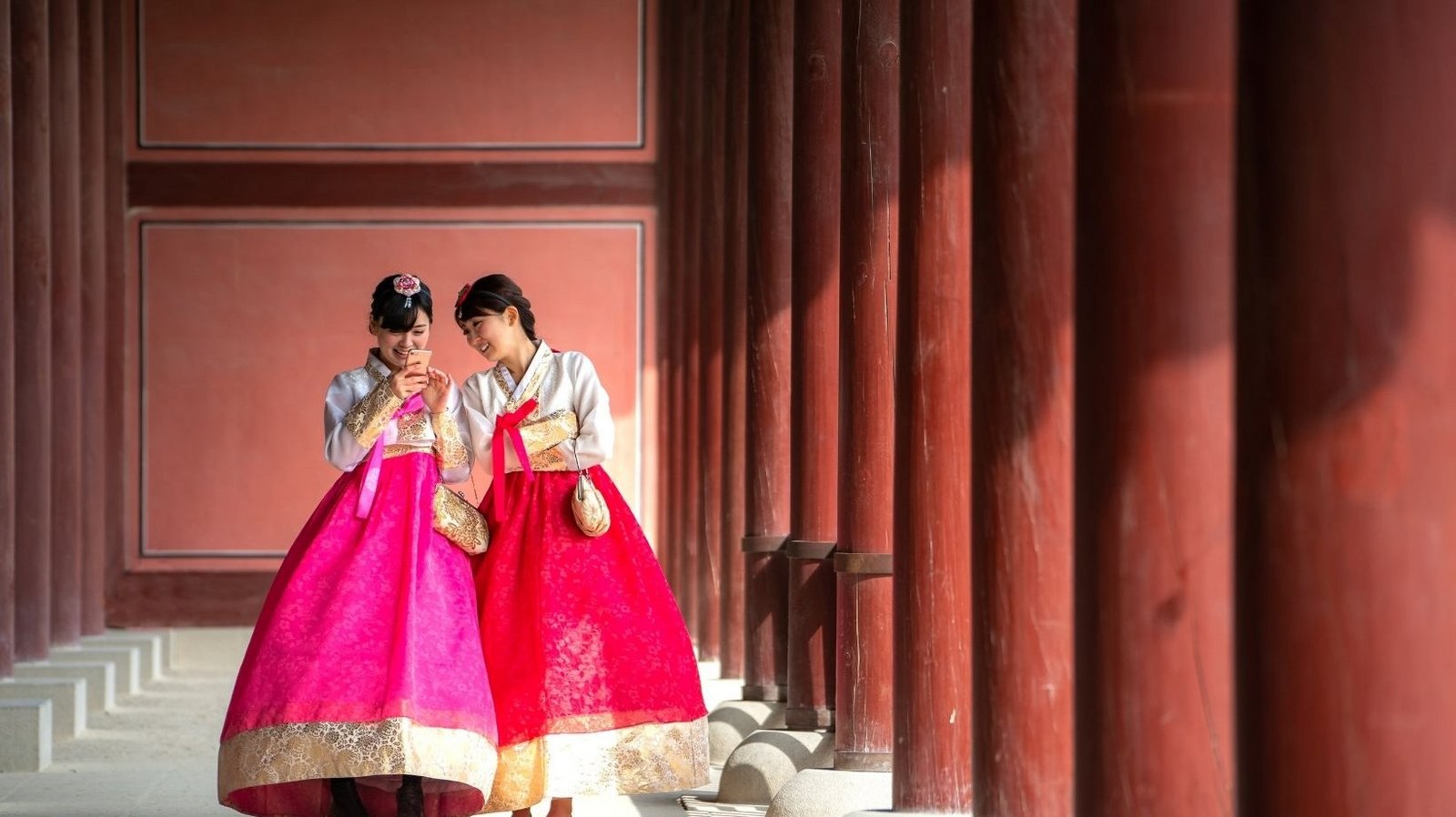
Celebrating Life and Family
After the ancestors have been sufficiently worshipped, breakfast is started. For breakfast, the food prepared the day before is eaten. But most importantly, a rice cake soup Tteokguk specially prepared for Seollal is eaten. According to a legend, with each bowl of soup eaten, you become a year older. For this reason, the older people try to restrain themselves from eating the soup. For the younger ones, eating the soup almost turns into a competition.
After the meal has been eaten with the whole family, the oldest of the family are now honored. This part is the most important part of the ceremony for the youngest in the family. The children bow to the grandparents/parents or other older family members and wish them a Happy New Year. To thank them for their sympathy, the children receive an envelope with money. This is called Sebaetdon (bow money).
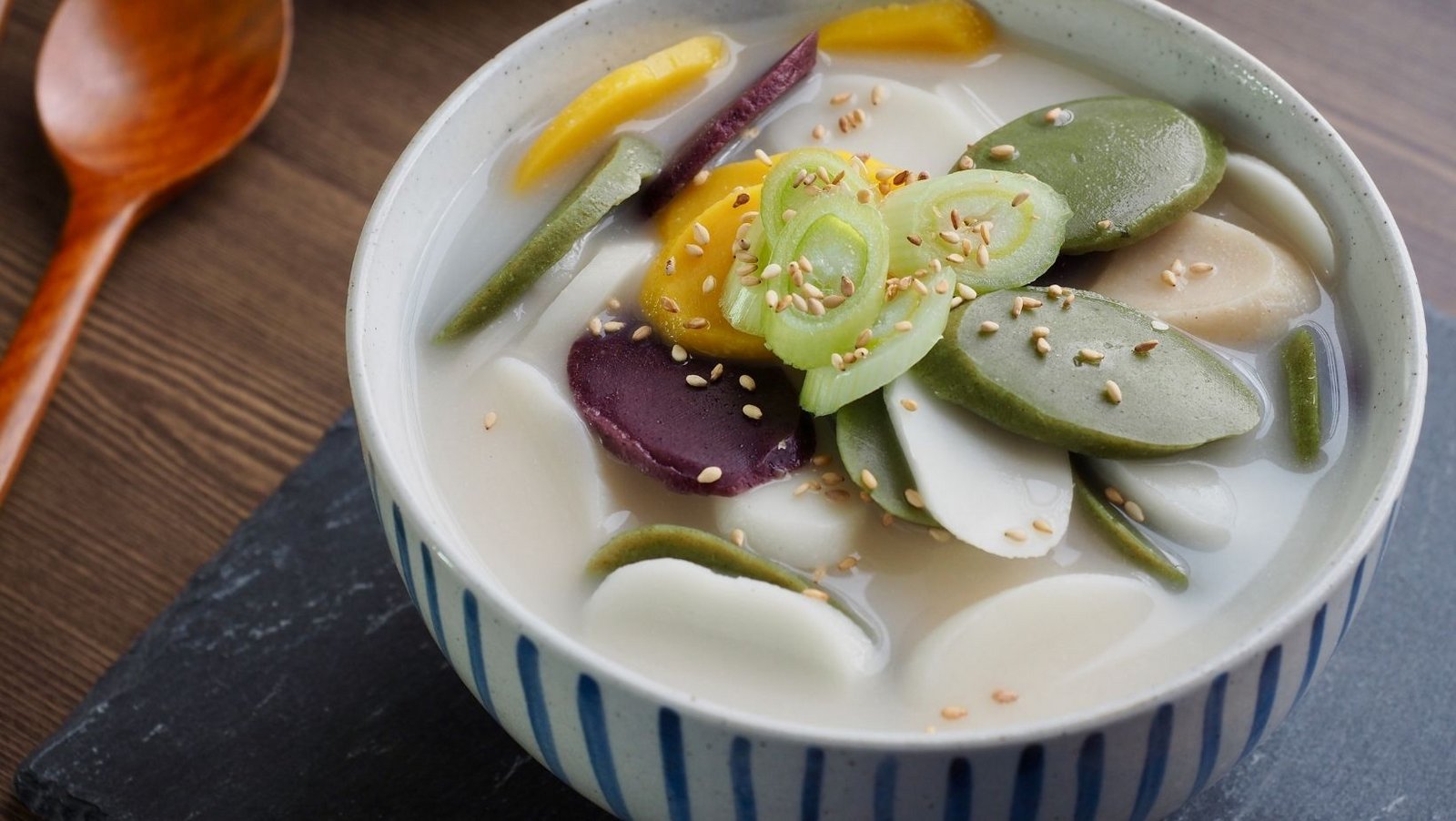
Playing Games
When the ceremonial part of Seollal is over, the family plays games. The most famous game is called Yut-Nori. The game dates to the time of the 3 Kingdoms (57 B.C. to 668 A.D.) and is considered to be the forerunner of the game "Mensch ärgere dich nicht" that we are familiar with. The wooden sticks replace the dice in the Korean variant. In this game, every now and then the gifts of money received are used as bets to make the game a little more exciting.
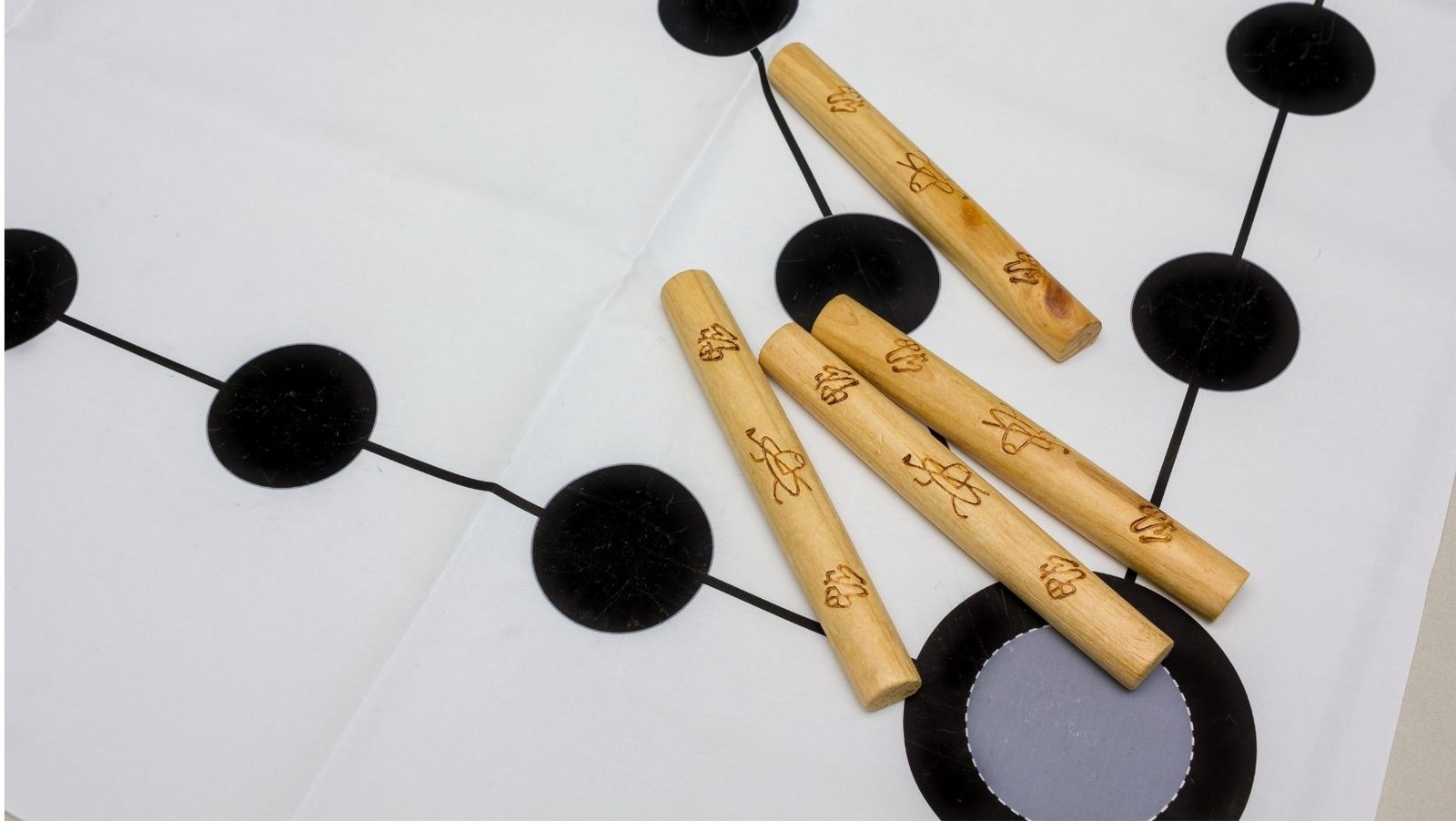
How Exchange Students Celebrate Seollal
For us as exchange students, or foreigners in general, it will be a quite calm time. According to some non-Korean graduate students, Seoul presents itself strangely empty on these days, subway stations are deserted, most restaurants and stores are closed and the few people you meet on the street are often other foreigners strolling through the emptiness.
Traveling at this time can sometimes be a bit difficult, as Koreans usually plan well in advance and flights and train and bus rides are booked many months in advance. Other offers are sometimes expensive, but you can sometimes get a bargain here. At Seollal, however, there are simply so many people on the road that it sometimes takes many times the regular travel time to get to the desired destination (at least if you are traveling by bus or car). The roads are jammed, rest stops are hopelessly overcrowded.
For foreigners in particular, however, Seollal can offer a nice opportunity to enjoy this almost surreal tranquility of the otherwise bustling metropolis or to visit one of Seoul's numerous palaces (on Seollal, there is usually free entry there).
